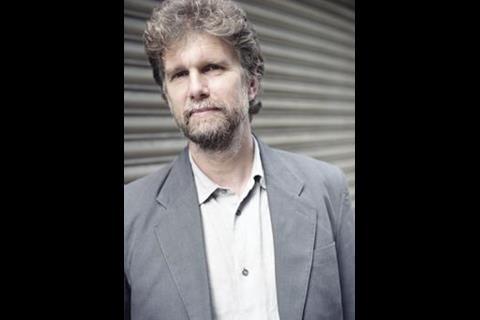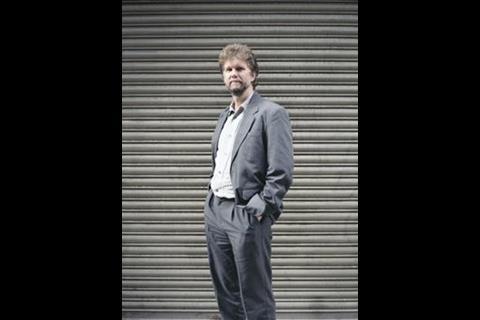RIBA’s special adviser on sustainability practices what he preaches – and he’d like to see more engineers doing the same. Bill Gething talks to Sophie Gale
The RIBA president’s special adviser on sustainability. It’s a pretty jargonistic phrase, sounding very much like the product of spin, so when I meet the man behind the job title, I get a pleasant surprise. Bill Gething is not the over-serious architect you might expect; he’s a genuinely friendly man who, after arriving on the train from Bath, offers me half of his cup of coffee.
The London office of Feilden Clegg Bradley, in which Gething is a partner, reflects his down-to-earth approach. No overly polished design statement, this. It’s an old, Deco-style building with windows that let in lots of natural light and can be opened to let in natural air, too. Its reception area is home to an impressive number of foldaway bikes and cycle helmets.
Listening to how Feilden Clegg Bradley evolved, it quickly becomes clear that the practice is founded on a genuine passion for low-energy design. Gething, Peter Clegg and Richard Feilden (who, tragically, died this year) first worked together in the 1970s, converting a group of farmhouses into a home. They lived on site in a kind of commune, sharing ownership of the project and a cow, which supplied everyone with fresh milk. It was an ideology that stuck. “It was all about self-sufficiency in a realistic way,” Gething explains. “And the philosophy of sharing responsibility and ownership has lasted – at one point everyone was made a partner in the company.”
Feilden and Clegg went on to form a practice in 1978, converting a former greengrocer’s in Bath into their offices. Gething joined the practice in 1981, then Keith Bradley in 1987. “The idea was that our office was on the street and anyone could walk in and talk to us about what they wanted,” Gething says. “Of course it wasn’t really like that and the only person who did walk in and talk to us was a pain in the arse!” This is typical of his take on sustainability: he follows ideals, but is also a realist.
“We try to be sensible and reflect clients’ wishes. We’d probably resign [from a project] if asked to do something horrendous,” he says. Then he pauses and adds: “Or at least I hope we would. But it’s our flagship projects that push us forward.”
In the early days, the practice focused on domestic buildings that, Gething says, were highly insulated for those days. Timber-frame homes built by the company in 1983 were so well insulated they had gas bills of just £6 a year – good enough to satisfy today’s Part L Building Regulations. These high standards led the way to more ambitious projects – Peter Gabriel’s studio, Box Mill, in 1989 and the Greenpeace headquarters in 1991. “Peter Gabriel was into natural materials and light, so the air-con had no metal ducts, just clay drain pipes,” Gething recalls.
Of course, not all clients are as obliging as all that – or at least they have more pressing budgetary constraints. Take The National Trust’s central office in Swindon, which Feilden Clegg Bradley worked on with services engineer Max Fordham and completed in June. The design exploits roof apertures and careful geometric analyses to ensure every workspace has a view of the sky. To redress the office equipment’s power consumption – still the largest source of CO2 emissions – photovoltaic electricity is generated on site. The building produces 30% of its own energy, but this project was built to a tight budget involving a leaseback arrangement on the building.
On engineers…
For the services engineers who help achieve such impressive, complex, works, Gething is full of praise. Small practices, such as Gale & Snowdon, Integral Structures and Atelier Ten are doing great things, he observes. The bigger firms are “getting their act together”.
Nobody told us how to be more sustainable – we had to figure it out for ourselves
But he also identifies plenty of bad working practices among services engineers. “You do come across engineers who don’t seem to worry about the link between strategic diagrams and reality. Often a services drawing will have a thin line across a doorway. But that line can represent something this huge,” he says, describing a vast ventilation shaft with his hands.
When I suggest that architects’ designs might sometimes make it impossible for engineers to provide sustainable services, Gething is unconvinced. “If it’s a good firm of engineers saying that, then it might be legitimate. But it’s still quite rare to find firms that make intelligent input early on in a project. Often, services engineers understand the kit, but not the building physics or how much the architect needs to know.” It’s a situation that particularly applies to low-energy buildings without suspended ceilings, where there is nowhere to hide wiring or ventilation.
He believes better team working, with engineers fully involved in a project right from the outset, is the solution. But, he admits, even the best teams can’t achieve strong, sustainable design without a good client. “Interested clients make sustainable buildings. They skew decisions on how money is spent. For instance, the National Trust’s headquarters used timber from its land and carpets made from the wool of its own sheep. And the factory and headquarters we did for Neal’s Yard had to be an economical building, but they used unfired brick and a timber frame.”
Gething believes RIBA is good at promoting ideas in a general sort of way, but CIBSE is better at providing definitive guidance on sustainability. He thinks RIBA needs to employ staff who can promote the agenda and harness the collective knowledge of the profession. “All this information needs to be freely available for the common good,” he says. “It’s partly a problem of privatised working, where everyone is in competition – nationalise the BRE, that would be a good start!”
Gething has no argument with the Part L Building Regulations, though he is mindful that they are “just a minimum standard, just the beginning”. He says the practice has always been confident that its projects felt comfortably above the standards. But now designs may need to change to comply – “or at least we will have to think about them more. And it will be much more difficult to go well beyond them”.
The industry needs government to enforce higher standards, he believes, otherwise there will always be an incentive to cut out sustainability measures. “Part L will be good for that. If regulations say you have to do something, then that’s okay. Industry will want that.”
But Gething also urges individuals to take more responsibility. After all, why should the industry have to wait to be guided and mollycoddled towards sustainable building? Gething and his colleagues are living proof that you can promote design that is both sustainable and cost-effective.
“There is always a cry for more information and help, from people in the industry who want to be more sustainable and don’t know how,’ he says. “But actually, nobody told us how to do it – we had to figure it out for ourselves. It just requires more effort.”
Source
Building Sustainable Design






















No comments yet